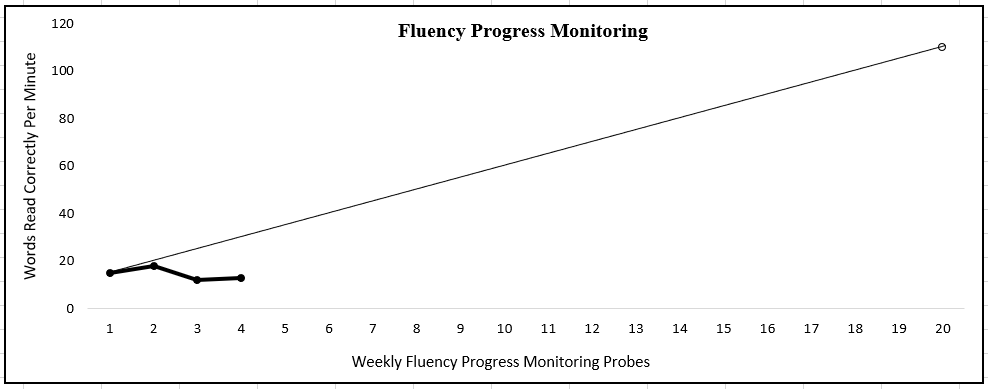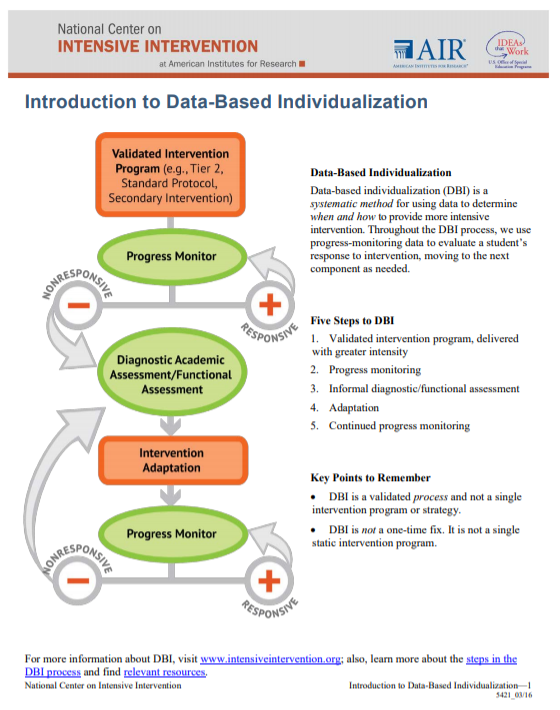Data-Based Individualization Case Study Part One

What is a case study? Heale and Twycross (2018) defined a case study as “research methodology, typically seen in social and life sciences. There is no one definition of case study research. However, very simply… ‘a case study can be defined as an intensive study about a person, a group of people or a unit, which is aimed to generalize over several units’.” The case study we are about to explore for explicit teaching follows a teacher as she is restructuring her lesson plan for a phonics lesson. We will explore who this teacher is, who her students are, how she adjusts her lesson plans and how she demonstrates this during her instruction. So…let’s meet the teacher.
(Please note that this case study is not a real life example and the occurrence of names to real people is a coincidence. All materials you will see in this case study are original.)
Mr. Williams is a reading intervention teacher in a large urban school district. The school is located in the heart of a large city with a diverse student population. Mr. Williams class is made up of three 4th grade students. Jill, Mark and Joe all receive 30 minutes of intensive reading instruction with Mr. Williams daily. Each of the students are currently reading well below grade level.
Let’s take a look at how Mr. Williams uses the process of data-based individualization to make adaptions to one of his students instruction.

Mr. Williams is a reading intervention teacher who works with small groups of students on reading skills. Since the start of the school year, Mr. Williams has been progress monitoring his students using a CBM oral reading fluency probe. He has been graphing his data and checking weekly to see if his students are making progress towards their fluency reading goal. When he looks at his data for the week, Mr. Williams sees that one of his students, Joe, is not making as much progress as the other students in his class. He wants to examine what he can do to help increase Joe’s fluency.

Mr. Williams has been using his school’s Tier II prescriptive reading intervention. The program has both group and individual instruction and contains many opportunities for students to respond both in the group and individually. The program focuses on teaching phonics, decoding skills and word work. Mr. Williams has been delivering the program with fidelity each week. Joe and the other students attend his reading class everyday for 30 minutes.
Mr. Williams attended a professional development on data-based instruction (DBI) at the end of the last school year. He decides that he is going to use the DBI process to make adaptations to Joe’s instruction. He looks at his materials from his training and looks over the DBI process chart that he got from the National Institute for Intensive Intervention (NCII).

(Source: National Institute for Intensive Intervention)
The first step in the DBI process is using a validated Intervention Program. He knows that he is already using a validated Tier II intervention that was chosen by his school’s Curriculum Support Team. The team consulted the NCII Academic Intervention Tools Chart and selected a program that was met the needs of their students and was supported by research.
Now that Mr. Williams has begun the DBI process, let’s visit Case Study Part Two to see how Mr. Williams uses the DBI process to adapt Joe’s instruction.
Click on the image below to see Case Study Part 2.
References:
DBI Process Overview. (n.d.). Retrieved October 27, 2019, from https://intensiveintervention.org/resource/dbi-process-overview.
Heale, R., & Twycross, A. (2018). What is a case study? Evidence – Based Nursing, 21(1), 7.

